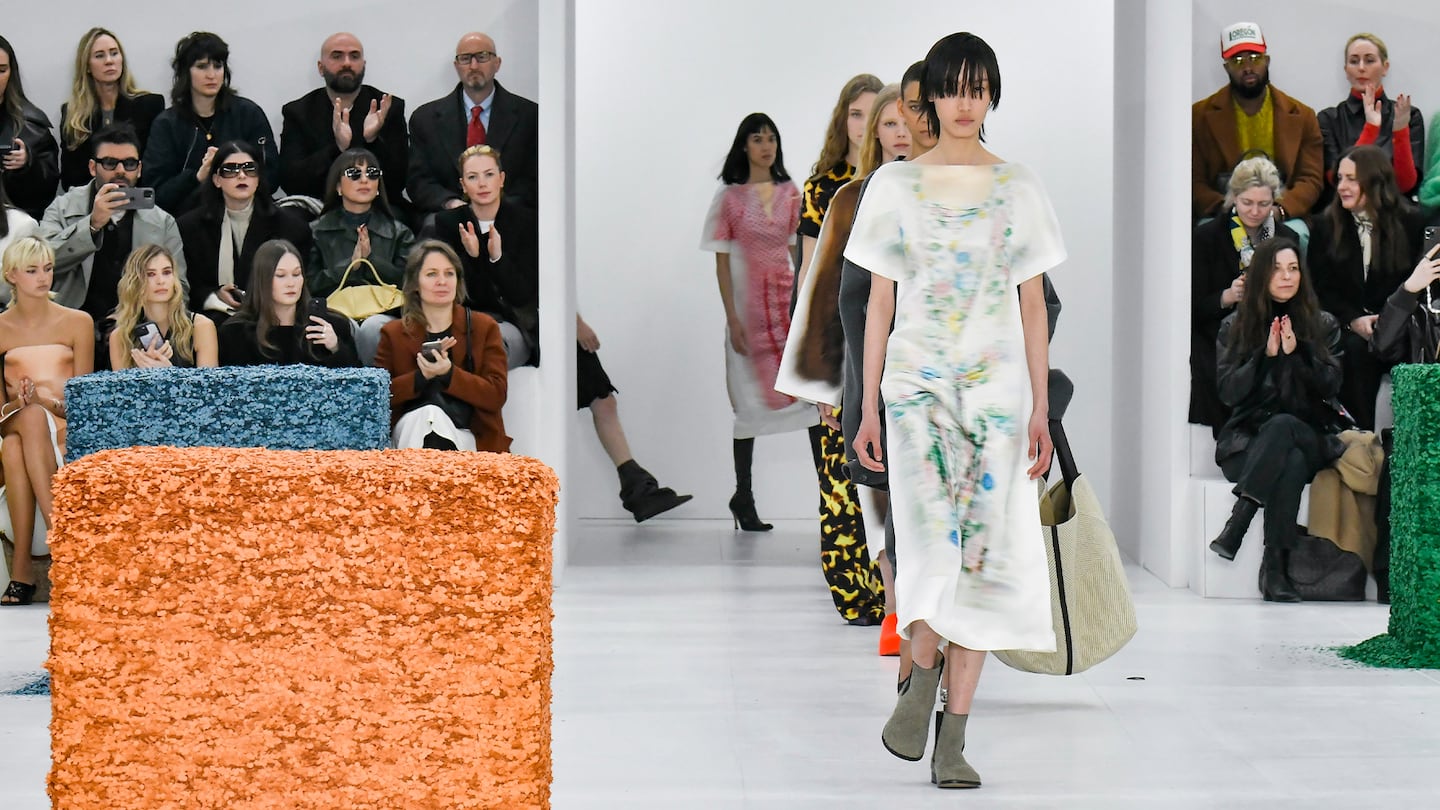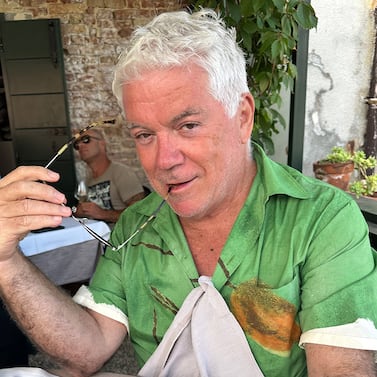
The Business of Fashion
Agenda-setting intelligence, analysis and advice for the global fashion community.

Agenda-setting intelligence, analysis and advice for the global fashion community.

PARIS — Jonathan Anderson’s collections are deep. So deep. On some level, they almost attain the level of myth. The location of Friday’s Loewe show was the Château de Vincennes on the outskirts of Paris. Deeply ingrained in the history of French royalty, it was, at various other times, a prison for the Marquis de Sade and the spot where German spy Mata Hari met her end by firing squad during the First World War. The show itself took place in a huge white box in the chateau’s courtyard. Anderson wanted arriving guests to feel history pressing in all around. It’s how he feels with Loewe. So much history… and then you’re confronted by the white box. It’s a metaphor. Purification is Anderson’s end game.
At the same time, he wants to push boundaries with what can be done — what is acceptable, even — with fashion. Here, the luxury of fine leathers, cashmeres, duchesse satins, velvets was turned to subversive purpose. There were slouchy boots served with any number of outfits in this collection that grounded the look, as a boot will do, but also undermined it. Not at all the footwear you’d expect with an evening cascade of ice-blue duchesse. Mind you, that same cascade was suspended from a doorknob! You smile. So would Marcel Duchamp. Anderson is still fashion’s arch Dadaist.
0 of 52
The models paraded around perfect squares of confetti, created by artist Lara Favaretto. They were moulded, not glued, so when the mould was removed, they started to crumble into puddles of primary colour. Another irresistible metaphor: all things must pass. Anderson opened his show with a similar statement about fragility. Dresses in duchesse were printed with blurred images, something observed in passing, like a Gerhard Richter painting or a Martin Margiela ghost dress. Later, there was a dress printed front and back with a trench coat, or a fur coat. “Fashion can become a bit of a blur sometimes,” the designer drolly observed in his post-show presser. The dresses, the canvases, were all antique pieces, not Loewe originals. “That’s the beauty of fashion, you can re-visit, re-interpret, re-engineer,” said Anderson.
There was an even more fragile beauty in the show’s gestural subtext. It started in the recent men’s show, with male arms resting, sling-like, in their tunic tops. Here, the gesture was more a defensive wrap. Anderson viewed it as a counterpoint to the impassivity of the robot dolls, the Pepto-Bismol modular pieces, which he compared to stress balls. “You can squeeze it and it goes back on itself.” Any collection by Jonathan Anderson wraps the universe into a very strange ball. And yet it seems to connect to fashion’s sweet spot: I see, I want, I buy. And never more so than with the bags that are any major brand’s bread and butter.
ADVERTISEMENT
Anderson said every bag in his new collection referred to a Loewe piece from the 1970s, an era he rejected out of hand ten years ago when he arrived at the legacy-laden leather house with a mandate to modernize. Now he’s embracing that past. “It’s a restart,” he declared.
And isn’t that what every whiskery fashion house craves? First and foremost among them is Givenchy, now almost three years into its revamp by young American Matthew Williams. The road has been long, with many a winding turn, but this season, something clicked and Williams meshed with the stately ghost of fashion’s last aristocrat, Hubert de Givenchy, to deliver a collection that straddled his own predilection for streetwear punkitude and an almost-classic beauty. The way that a dress in emerald green silk from the late 1970s was reinterpreted in sinuous knit for the 2020s was a master stroke. At the same time, in the same collection, bondage trousers in a sorely distressed houndstooth underpinned artful remnants of t-shirts and leather jeans, the entire ensemble swathed in a shearling duster. Drama!
0 of 54
In a season where the statement coat reigns supreme, Williams offered more drama in the form of broad-shouldered Gothic floor-sweepers. But there was also lyricism in a sheer lilac gown, or a full-length wrap dress inspired by a serpentine creation by Lee McQueen that Williams found in the archive.
Ahead of his debut at the storied French couture house, the former Gaga collaborator and founder of street-luxe label Alyx talks exclusively to Tim Blanks.
No other designer gets twisted like Jonathan Anderson.

Tim Blanks is Editor-at-Large at The Business of Fashion. He is based in London and covers designers, fashion weeks and fashion’s creative class.
From where aspirational customers are spending to Kering’s challenges and Richemont’s fashion revival, BoF’s editor-in-chief shares key takeaways from conversations with industry insiders in London, Milan and Paris.
BoF editor-at-large Tim Blanks and Imran Amed, BoF founder and editor-in-chief, look back at the key moments of fashion month, from Seán McGirr’s debut at Alexander McQueen to Chemena Kamali’s first collection for Chloé.
Anthony Vaccarello staged a surprise show to launch a collection of gorgeously languid men’s tailoring, writes Tim Blanks.
BoF’s editors pick the best shows of the Autumn/Winter 2024 season.